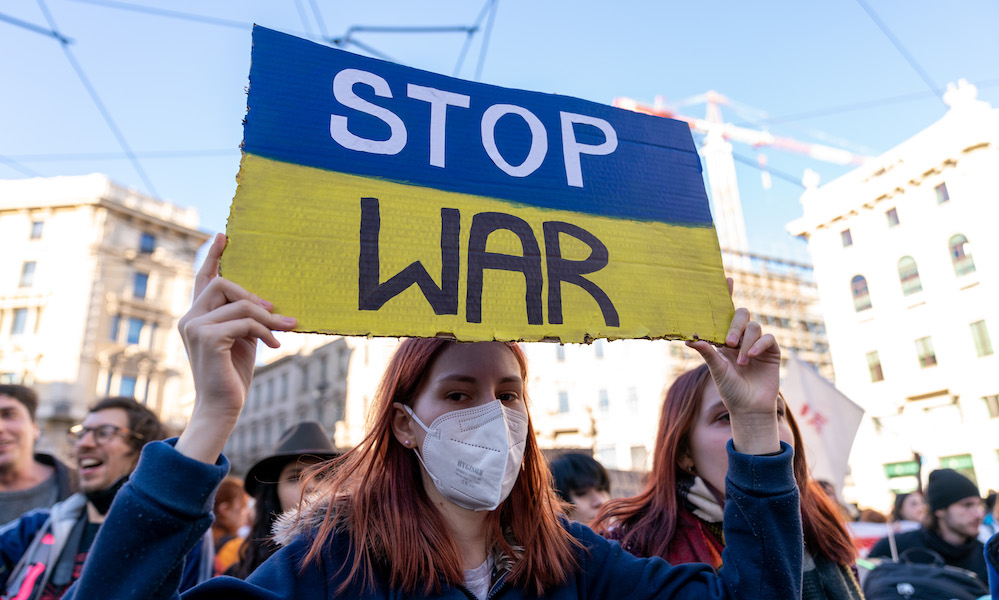Ukraine War
EU Leader Says They Can’t Fill US Funding Gap Supporting Ukraine
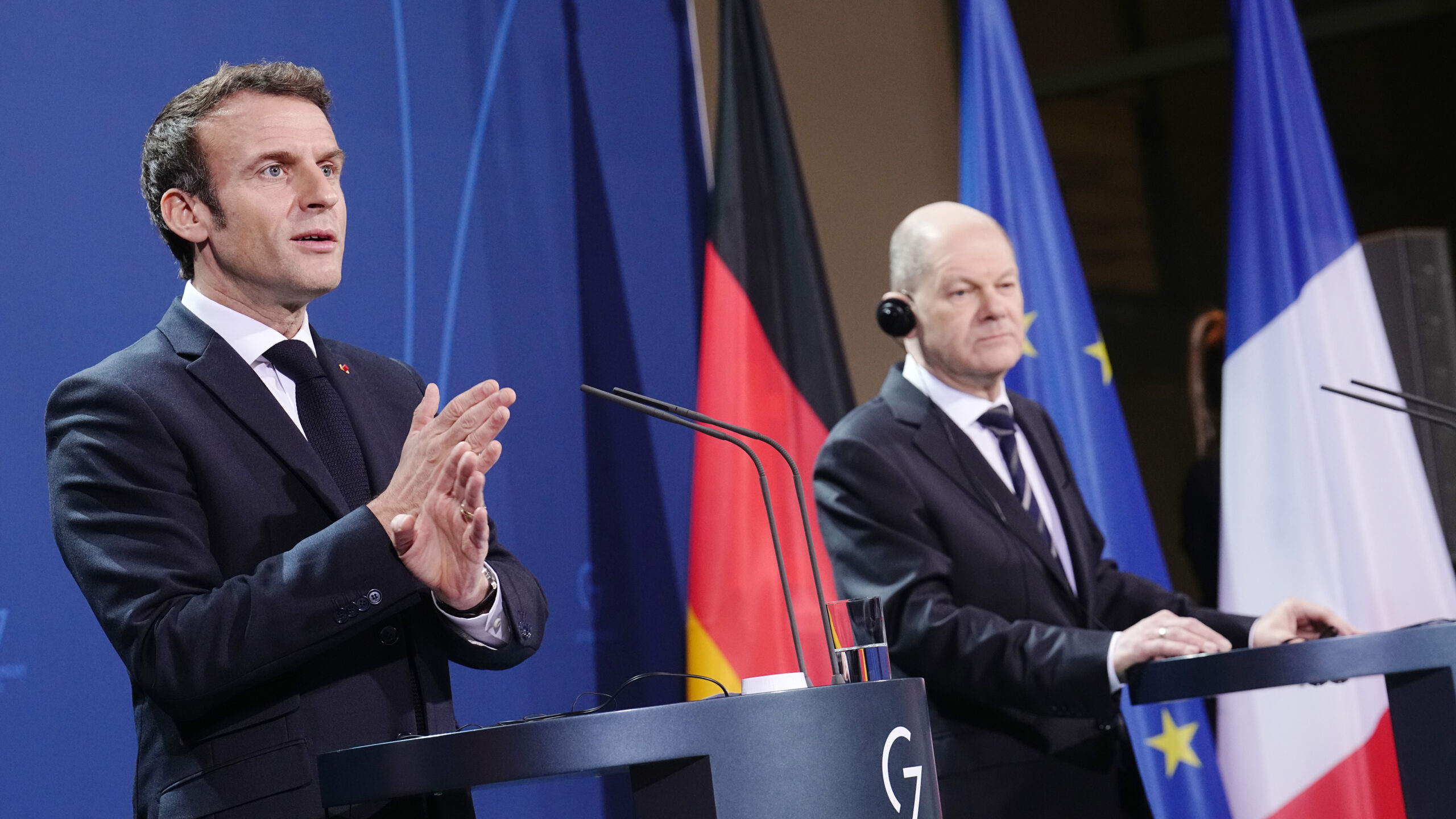
At the EPC summit on Thursday, European Union leaders reaffirmed unwavering support for Ukraine, but warned Ukrainian President Volodymyr Zelensky, that the EU would be unable to fully fill any budget vacuum left by the US.
Fears have been fueled by political upheaval in Washington, which caused President Joe Biden to say on Wednesday that it “does worry me” that US backing for Ukraine could be jeopardised.
“Can Europe fill the void that the United States has left?” “Certainly, Europe cannot replace the United States,” stated the EU’s foreign policy leader, Josep Borrell, upon his arrival in Spain for the European Political Community (EPC) conference.
Speaking to the EPC, Zelensky voiced anxiety about the “political storms” raging in Washington, but insisted that he still had bipartisan support in the US for continuing help.
“America assisted us and Europe in surviving.” And now it is critical for Europe not to hide sails from the wind in order to weather the storm,” he remarked. The EU and the United States, which comprise the majority of NATO members, are critical to Ukraine’s fightback.
The European Union and its member countries have pledged Ukraine more than $100 billion in multi-year assistance, including armament deliveries. The US has pledged $43 billion in military aid, while Congress has approved $113 billion in aid, including humanitarian assistance.
However, new US financing for Ukraine has been halted as part of a weekend agreement reached with opposition Republicans to avoid a US government shutdown. That conclusion, according to Josep Borrell, “was certainly not expected — and it’s certainly not good news.”
He went on to say that the EU hoped that “there will not be a definite position of the US.”
“Ukraine needs the support of the European Union… but also the support of the US,” he went on to say.

Ukraine’s EU Membership
Maintaining European support to Ukraine was a significant subject during the EPC meeting in Granada, which drew leaders from practically every country on the European continent except Russia.
“I believe that all leaders understand the risks of not providing full support to Ukraine,” said Moldovan President Maia Sandu, whose nation, Ukraine’s neighbour, is pushing for EU membership.
However, Luxembourg Prime Minister Xavier Bettel, like Borrell, stated that “we cannot compensate” for any deficit in US aid to Ukraine.
“That would be not possible, but we have to continue to support as much as we can,” he told reporters.
While acknowledging that Europe has little voice in “internal US affairs,” Bettel stated that “we hope that it will find a solution soon in the interest of Ukraine.”
Ursula von der Leyen, chief executive of the European Commission, described the US withdrawal of financial aid to Ukraine as a matter of “timing” for Washington.
She emphasised that work was underway to implement half of the pledged EU funding to Ukraine – 50 billion euros ($53 billion) over the next four years – in order to provide Kyiv with “predictability and reliability” for its strained budget.
According to leaders at the EPC meeting, Russian President Vladimir Putin calculated that the West would tired of long-term backing for Ukraine, giving him a road to triumph.
“I think Russia wants us to be tired,” Estonian Prime Minister Kaja Kallas stated, adding, “but we should show them that we aren’t.” We must assist Ukraine for as long as it takes.”
The topic, though, was expected to dominate a two-week EU-US summit in Washington with Biden, von der Leyen, and European Council President Charles Michel.
Aside from the ongoing conflict in Ukraine, the leaders at the EPC summit were to discuss migration, with British Prime Minister Rishi Sunak and Italy’s Georgia Meloni advocating for a strategy that would prohibit boats transporting asylum seekers from leaving the Mediterranean.
Fewer Americans support arming Ukraine
Meanwhile, according to a Reuters poll issued Thursday, the percentage of Americans across the political spectrum who support supplying guns to Ukraine has decreased.
The poll, taken on Tuesday and Wednesday, found that only 41 percent of respondents thought that the US should give weapons to Ukraine, compared to 65 percent in a June 2023 study.
Support for deploying arms to Ukraine is dwindling across the board. Democratic support plummeted from 81% in June to 52% in October.
During the same time frame, Republican support fell from 56% to 35%. Independent support fell from 57 to 44 percent.
The drop in support follows the passage of a continuing resolution by Congress on Saturday to prolong government funding through Nov. 17, which did not include financing for Ukraine. However, many lawmakers have pledged to pass separate legislation to provide greater assistance in the near future.
President Biden has asked Congress for further help for Ukraine, and the White House has warned of the risks of not providing more money.
The issue has also become significant in the GOP presidential primary for 2024, as a more isolationist perspective of foreign policy has dominated the party’s hard-right flanks.
According to the most recent poll, support for giving financial aid to Ukraine is even lower than support for delivering guns. In the October poll, 37% of respondents believed that the United States should provide financial help, including 51% of Democrats, 26% of Republicans, and 41% of independents.
However, a recent poll found that a bigger proportion of Americans support both sorts of help for Ukraine. According to a poll released Wednesday by the Chicago Council on Global Affairs, 61 percent of respondents favoured sending economic aid to the country, while 63 percent supported supplying weaponry and military supplies.
Though support was higher across the political spectrum, there was a partisan divide, with 76 percent of Democrats, 47 percent of Republicans, and 58 percent of independents favouring economic aid and 50 percent of Republicans, 77 percent of Democrats, and 60 percent of independents favouring military aid.
The Reuters survey comprised 1,005 adults from around the country. The credibility interval was 3.8 percentage points plus or minus.

Finance
G7 Leaders Lend $50 Billion Russia’s Money to Ukraine
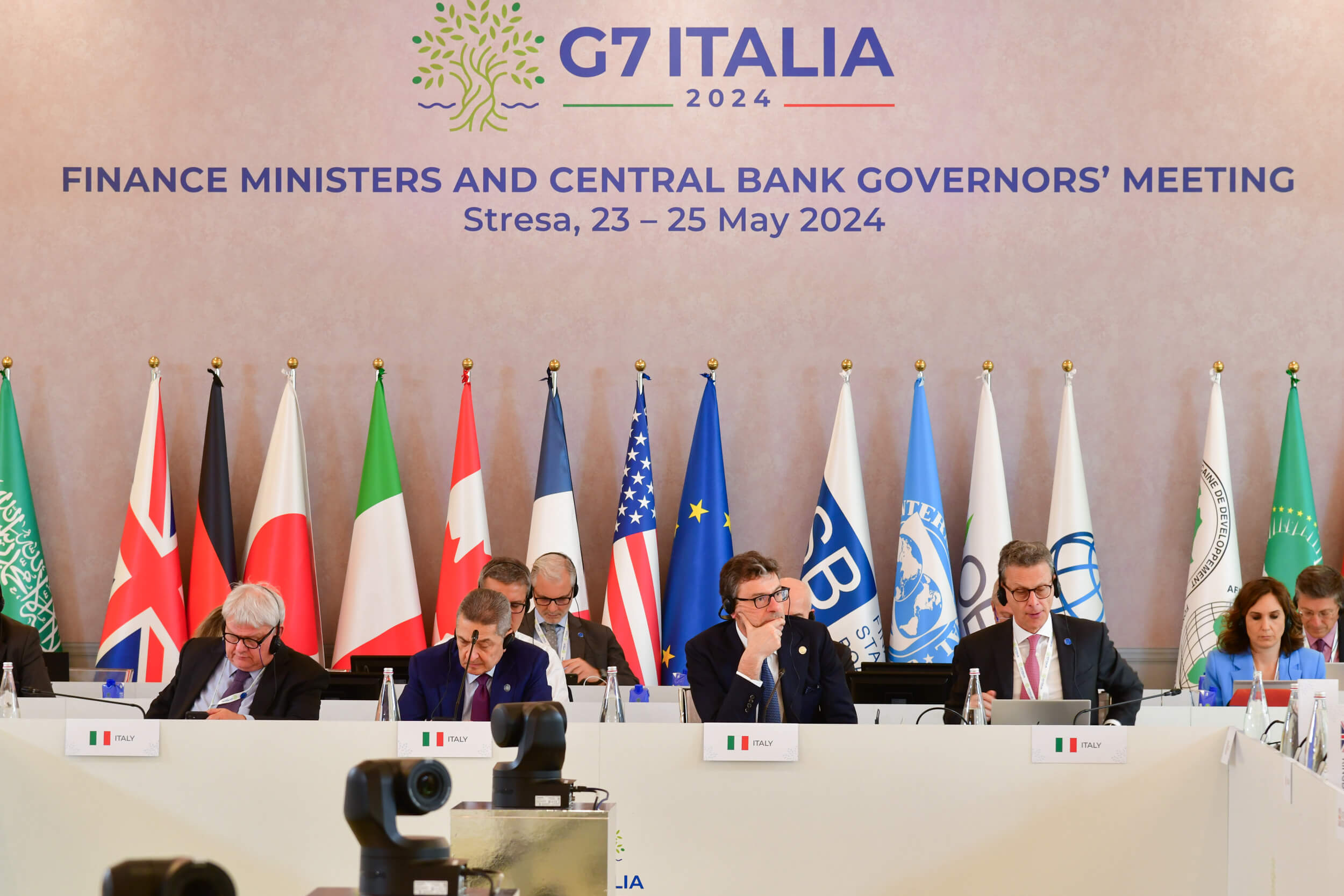
At the behest of the United States, G7 leaders have agreed to offer at least $50 billion in loans to Ukraine, using interest from Russian sovereign assets. Russia’s assets in the G7 countries were frozen after the invasion of Ukraine more over two years ago.
In addition to Ukraine’s future, the conflict between Israel and the Palestinian militant group Hamas in the Gaza Strip was a prominent topic on the first day of their summit in Fasano, southern Italy, with the G7 members endorsing a US-proposed cease-fire agreement.
The G7 loan agreement was reached amid concerns about “Ukraine fatigue,” with questions remaining about how long the US and other like-minded countries can stay united in supplying Kyiv with weaponry and assisting it in rebuilding damaged infrastructure.
US President Joe Biden has described the Russian invasion, which began in February 2022, as “a test” for the globe, presenting the question of whether it can unify “for sovereignty, freedom, and against tyranny.”
“The United States, the G7, and countries around the world have constantly answered the question with ‘Yes, we will.’ We’ll say it again. “Yes, again and again, we will stand with Ukraine,” Biden said at a joint press conference with Ukrainian President Volodymyr Zelenskyy, who was invited to the summit as a guest.
US perpetrated the loan
The US has committed to provide loans of up to $50 billion, according to a senior Biden administration official, adding that it will not be the only lender. “It will be a loan syndicate. We’re going to share the risk because we’re all committed to getting this done,” the official explained.
According to a Japanese official, Prime Minister Fumio Kishida informed his G7 counterparts that his country’s funds will not be utilized for military purposes due to its war-renouncing Constitution.
However, the official declined to provide information about the new lending scheme. He stated that the leaders “are planning to make some kind of announcement” regarding the plan in their communique, which is anticipated to be released Friday.
Since the invasion, the G7 has slapped a number of economic restrictions on Moscow, including asset freezes. The US official, who previewed the arrangement on the condition of anonymity, did not reveal which G7 members will participate in the new project.
A G7 source said Japan, the United Kingdom, and Canada are expected to join the US-led initiative, while France, Germany, and Italy are unlikely to participate for the time being because the European Union already has a comparable support plan.
Russia to bear the expense
According to the US source, Ukraine will not have to repay up to $50 billion in loans from the group of the world’s top industrialized democracies, which will begin this year. Russia will ultimately bear the expense.
According to the Japanese government, the G7, along with Australia, has frozen around $280 billion in Russian governmental assets, as well as approximately $58 billion in assets owned by individuals, companies, and organizations in the country.
Kishida’s government has concentrated on giving support for Ukraine’s rehabilitation in accordance with Japan’s Constitution, such as demining cooperation and nonlethal defense equipment.
During the summit’s opening session, Kishida emphasized the importance of maintaining a free and open international order based on the rule of law, as well as strengthening connections with developing and emerging countries in the “Global South,” according to Japan’s Foreign Ministry.
Both “have become increasingly important as we face new challenges, including Russia’s continued aggression against Ukraine and heightened tensions in the Middle East,” Kishida told the ministry.
Rebuilding Ukraine
Regarding Ukraine, Kishida stated that Japan is considering putting sanctions on foreign companies and groups for exporting supplies to Russia through third countries that could be diverted for military purpose, according to the ministry.
The action would be implemented with specific entities in China, India, Kazakhstan, the United Arab Emirates (UAE), and Uzbekistan in mind, it stated.
The World Bank estimates that rebuilding Ukraine will cost $486 billion over the next decade, which Ukraine is expected to fund with loans, creating commercial opportunities for Japanese and international corporations.
In late May, Biden announced a three-stage cease-fire plan to end the conflict between Israel and Hamas, claiming it had been suggested by Israel and is customarily backed by the US.
The United Nations Security Council approved the plan earlier this month, but US Secretary of State Antony Blinken stated on Wednesday that Hamas had made various adjustments, some of which were impossible.
International pressure has mounted on Israel to halt its military campaign in Gaza, which has displaced thousands of Palestinians and caused serious food, water, and energy shortages.
The G7 criticized Hamas’ “terrorist” strikes on October 7, which started Israel’s continuing offensive in the Gaza Strip, but avoided publicly denouncing Israel.
Source: BBC
Ukraine War
Ukraine’s Zelensky Accuses China of Disrupting Peace Summit
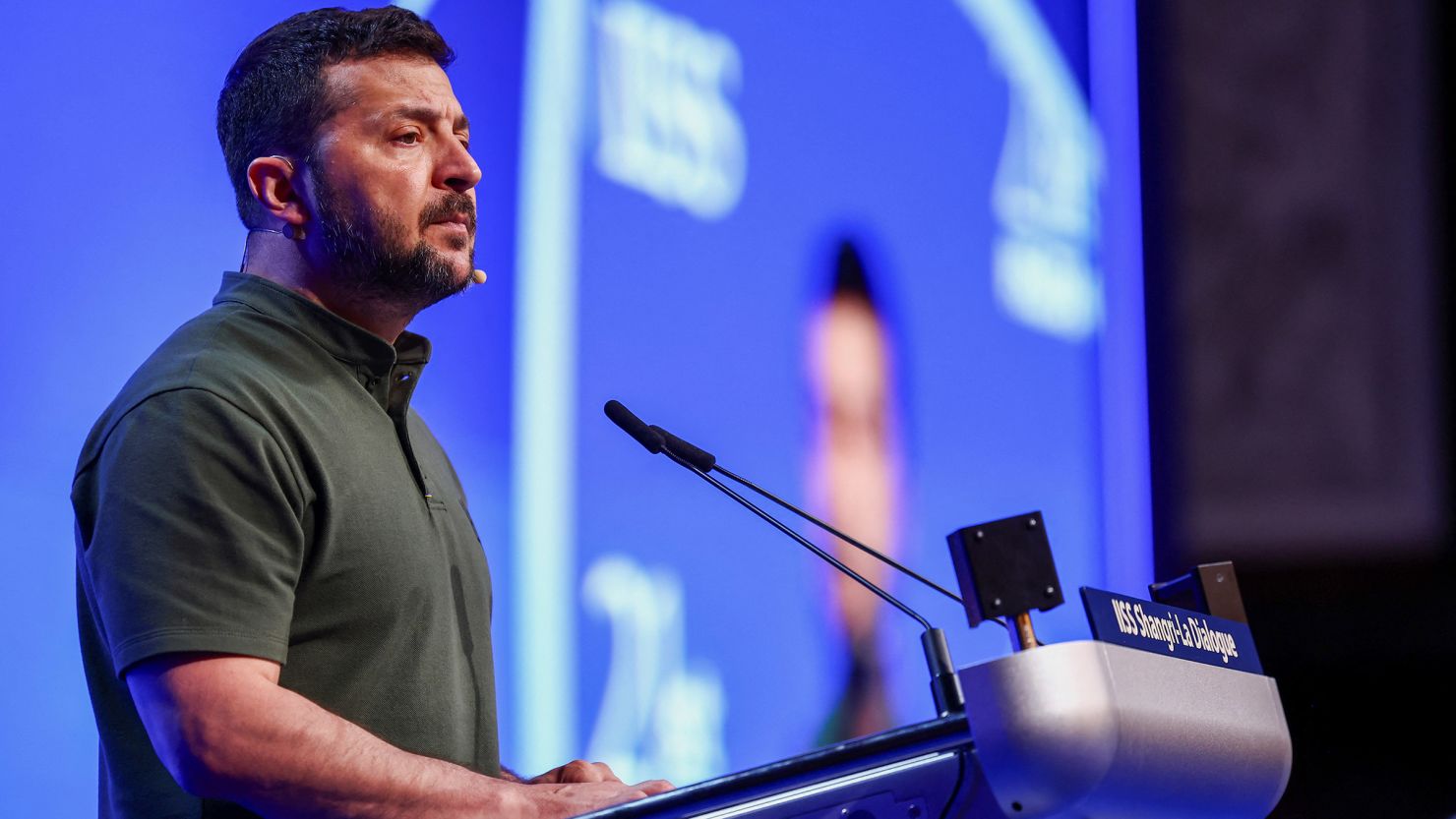
On Sunday, Ukraine’s President Volodymyr Zelensky accused China of working hard to prevent countries from attending a peace talks, which Beijing has publicly criticized for not including Russia.
Zelensky made the statements during a security gathering in Singapore, where he hoped to raise support for the conference and advocate for additional military aid for Ukraine, which has been losing ground to Russian soldiers.
“China, unfortunately, is working hard today to prevent countries from coming to the peace summit,” Zelensky told reporters on the sidelines of the Shangri-La Dialogue, which brings together defense experts from across the world.
Beijing believes the summit “should have the recognition of Russia and Ukraine, equal participation of all parties, and fair discussion of all peace plans,” foreign ministry spokeswoman Mao Ning said at a press conference. “Otherwise, it is difficult for the conference to play a substantive role in restoring peace,” she stated.
Biden and China’s Jinping absent
Zelensky also voiced dissatisfaction that “some world leaders” had not signed up for the meeting, with China indicating that Xi Jinping will not go and US President Joe Biden still to commit.
China stated that it would be “difficult” for it to attend if Russia did not participate, something Ukraine has denied.
Kyiv expects that the peace summit would provide wide international support for its vision of the parameters required to halt Russia’s war.
On Sunday, Zelensky announced that more than 100 countries and organizations had signed up for the meeting, and he invited Asia-Pacific states to join.
The peace meeting risks being overshadowed if prominent Ukraine supporter Biden, who is currently running for president against Donald Trump and has made no indication that he will attend, does not show up.
Zelensky described China as “a tool in Putin’s hands,” accusing Russia of utilizing Chinese influence and diplomats to derail the peace talks.
While China claims to be a neutral party in the Ukraine war, it has faced criticism for neglecting to denounce Moscow’s attack.
On Sunday, Zelensky met with US Defense Secretary Lloyd Austin on the sidelines of the Singapore Security Forum. Zelensky stated that they had a “very good” encounter.
Bilateral security agreement
In a post on X, Zelensky stated that the duo addressed “the defense needs of our country, bolstering Ukraine’s air defense system, the F-16 coalition, and the drafting of a bilateral security agreement.”
According to a summary of the meeting, Pentagon spokesman Major General Pat Ryder stated Austin underlined unwavering US support for Ukraine in the face of Russian aggression. He reaffirmed the US commitment to maintaining the strong support of a coalition of over fifty countries to help Ukraine defend its freedom,” Ryder stated.
The meeting occurred after Washington opted to partially ease limits on using US-supplied missiles to strike within Russia, which Zelensky hailed as a “step forward”.
Zelensky and Austin last met in December in Washington, where Zelensky made a last-ditch request for US funding before it ran out.
Following months of political bickering, the US Congress approved a $61 billion aid package for Ukraine in April, allowing the country’s outgunned military to receive desperately needed weapons.
Chinese Defense Spokesman Wu Qian told AFP that he was unaware of any plans for Chinese Defense Minister Dong Jun to meet with Zelensky in Singapore. Ukraine is battling to contain a Russian ground incursion in the Kharkiv region, where Moscow just scored its largest territorial gains in 18 months.
Russia’s assets to bolster Ukraine War
Zelensky has been touring European countries in recent days, requesting more military supplies for Ukrainian troops and warning them of the dangers if they show any symptoms of exhaustion from the conflict.
“It is very important for Ukrainians that the world does not get tired… that the world understands that it cannot get tired of the war launched by the aggressor,” Zelensky told reporters on Tuesday.
Meanwhile, Ukraine’s allies are grappling with how to extract funds from frozen Russian assets to bolster Kyiv’s war effort, a topic that is becoming more pressing as Russia gains territory on the battlefield and the outlook for Ukraine’s public finances worsens.
At the top of the agenda as financial officials from the Group of Seven affluent democracies meet in Stresa to discuss what to do with the frozen Russian central bank reserves in reaction to the invasion of Ukraine.
Ukraine and many of its supporters have asked for the seizure of US$260 billion in Russian assets frozen outside the country following the February 24, 2022 invasion.
However, European officials have refused, citing legal and financial stability concerns. The majority of the frozen assets are located in Europe.
Source: AFP
Ukraine War
Ukraine is Losing Despite $330 Billion in Aid from the US and its NATO Allies
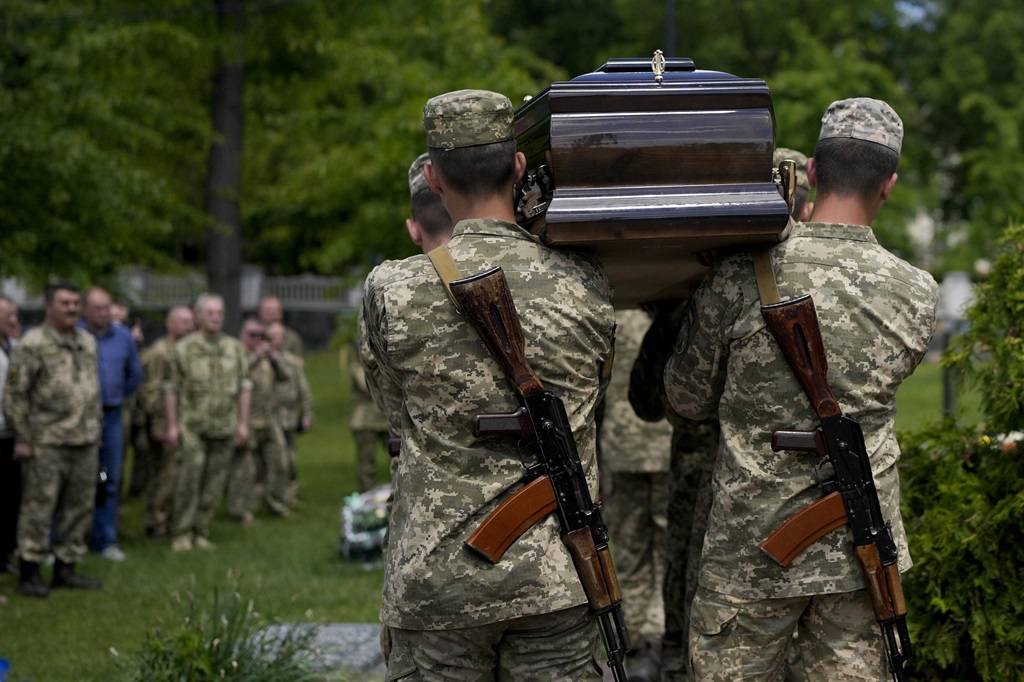
In recent days, Russian troops, backed by fighter jets, artillery, and deadly drones, have poured across Ukraine’s northeastern border and taken over at least nine villages and towns in the last three days. Each day, they’ve taken over more land than at almost any other time in the war, except for the beginning.
Ukrainian troops are pulling back in some places, and leaders are pointing the finger at each other for the losses. A lot of Ukrainian people are running away to Kharkiv, which is the closest big city.
Their advances are barely a few miles deep, but they have taken up approximately 100 kilometers (62 miles) of Ukrainian land. Russia took months to achieve the same result in Ukraine’s highly defended east.
Russia asserts that its forces have penetrated the border town of Vovchansk, which Ukraine disputes. The town has been heavily bombed in recent days, and thousands of civilians have been evacuated.
Denys Yaroslavskyi, the Commander of a Ukrainian Special Reconnaissance Unit, is outraged and wants to know what happened to Ukraine’s defenses. “There was no first line of defense.” We saw it. The Russians have just walked in. “They just walked in, with no mined fields,” he tells the BBC.
He claims officials claimed that defenses were being developed at great expense, but in his opinion, those defenses simply did not exist. “It was either a case of incompetence or corruption. It was not a failure. “It was betrayal.”
Everyone expected this incursion. Both Ukrainian and Western intelligence agencies were aware that Russia was assembling soldiers over the border, with estimates of up to 30,000 troops.
President Vladimir Putin had also openly expressed his intention to establish a buffer zone within the Kharkiv region to safeguard Russian territory from Ukrainian artillery strikes. However, despite government claims, Ukraine appears to have been unprepared.
Denys, who talked to the BBC from a park in Kharkiv, says he’ll be back on the front lines with his guys in an hour, near the town of Vovchansk, just 5 kilometers (3 miles) from the Russian border.
According to reports, Russian troops have already reached the town’s perimeter. Denys expresses concern that it may soon be back in Russian control.
We had previously visited the town, accompanying a local police officer, Oleksii, who was collecting up locals who wanted to evacuate to safety. He was driving quickly to evade the Russian drones hovering overhead and the continual bombardment of artillery.
Prior to the war, the town had a population of approximately 20,000. The majority had fled at the outset of the war, reducing the population to 3,000 – but hundreds more have left in recent days. According to Oleksii, “it’s easier to leave now, before they get killed or injured” .
Russia is advancing in Kharkiv by destroying Ukrainian villages and towns. Oleksii says that Russia has been shooting 50 to 60 shells into the town every hour.
Then there are glide bombs, which are launched from Russian jets tens of kilometers from the front lines, well beyond the range of Ukraine’s inadequate air defenses.
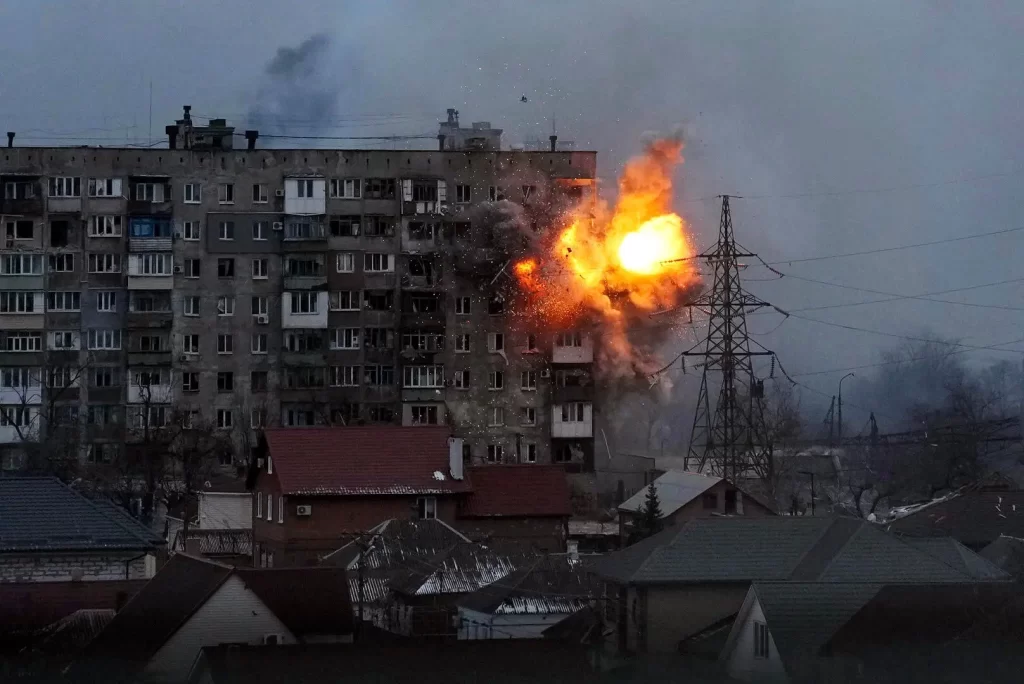
Russian army tank fired on an apartment building in Mariupol, Ukraine: Image AP
Russia Bombarding Ukraine
Russia has been shooting approximately 100 glide missiles every day across the 1,000 kilometer front. Over the course of an hour, we heard half a dozen jet-like screeches, followed by earth-shattering explosions.
Opening a new front in the north tests Ukraine’s limited resources. The US’s delay in approving additional military aid has depleted Ukrainian forces of ammunition.
Ukraine has been able to fire one artillery round per ten rounds fired by Russia. That is slowly being rectified, with US assistance now on the way.
However, the Kharkiv offensive highlighted issues that Ukraine has been too sluggish to address, such as mobilizing sufficient troops and constructing effective defense lines. Re-enforcements dispatched to Kharkiv have had to be taken from other sectors of the front, leaving insufficient reserves.
Ukrainian officials continue to stress that Kharkiv is not under fear of a ground invasion. However, the further the Russians push, the more probable it will be within range of Russian fire.
Denys believes Russian forces will try to focus on the east and take the entire Donbas. However, he claims Russia is also attempting to exploit Ukrainian weaknesses all along the 1,000-kilometer front. In Kharkiv, they found one.
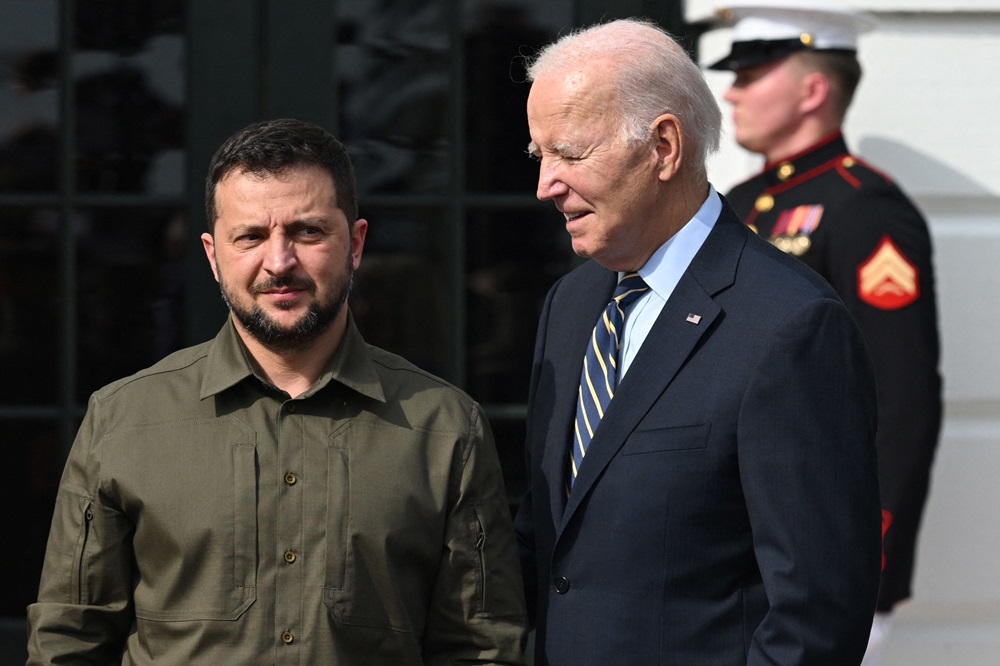
President Joe Biden and Ukrainian President Volodymyr Zelensky: Getty Images
Hundreds of Billion Spent
Since the beginning of the war, the United States Congress has passed five measures providing continued help to Ukraine, the latest recent in April 2024. The overall budget authority under these bills, known as the “headline” figure, is $175 billion.
Dozens of other countries, including most NATO and EU members, are also contributing significant aid to Ukraine.
Furthermore, on February 1, 2024, European leaders decided to spend up to $54 billion for a new Ukraine Facility to support Ukraine’s recovery, reconstruction, and modernization, as well as its reform initiatives as part of the EU membership process, until 2027.
This takes their total commitment to date to more than $155 billion. Since Russia’s invasion in February 2022, the United States and its NATO partners have allocated $330 billion to Ukraine.
Russia’s military and war-related spending is expected to increase 29% year on year to 12.8 trillion rubles, or nearly $140 billion.
Meanwhile, Ukraine faces an existential threat equal only to the moment immediately before Russia’s full-scale invasion in February 2022. However, unlike in the past, improvements are unlikely to occur very soon.
Ukraine may lose the war
Not only have conditions along the frontline deteriorated significantly, according to Ukrainian commander-in-chief Oleksandr Syrsky, but the possibility of a Ukrainian defeat is now being discussed in public by people such as General Sir Richard Barrons, former commander of the UK’s Joint Forces Command.
On April 13th, Barrons stated to the BBC that Ukraine may lose the war by 2024 due to a sense of inability to win. And when it reaches that point, why would anyone want to fight and die to protect the indefensible?
This could be his strategy of pressuring the West to offer greater military supplies to Ukraine more rapidly.
However, the fact that the secretary general of the North Atlantic Treaty Organization (NATO), Jens Stoltenberg, publicly accepts that in order to end the war, Ukraine will have to negotiate with Russia and decide ‘what kind of compromises they’re willing to do’ is a clear indication that things are not going well for Ukraine.
By Geoff Thomas
-

 News3 years ago
News3 years agoLet’s Know About Ultra High Net Worth Individual
-
Entertainment2 years ago
Mabelle Prior: The Voice of Hope, Resilience, and Diversity Inspiring Generations
-

 Health4 years ago
Health4 years agoHow Much Ivermectin Should You Take?
-

 Tech2 years ago
Tech2 years agoTop Forex Brokers of 2023: Reviews and Analysis for Successful Trading
-

 Lifestyles3 years ago
Lifestyles3 years agoAries Soulmate Signs
-

 Movies2 years ago
Movies2 years agoWhat Should I Do If Disney Plus Keeps Logging Me Out of TV?
-

 Health3 years ago
Health3 years agoCan I Buy Ivermectin Without A Prescription in the USA?
-

 Learning3 years ago
Learning3 years agoVirtual Numbers: What Are They For?
